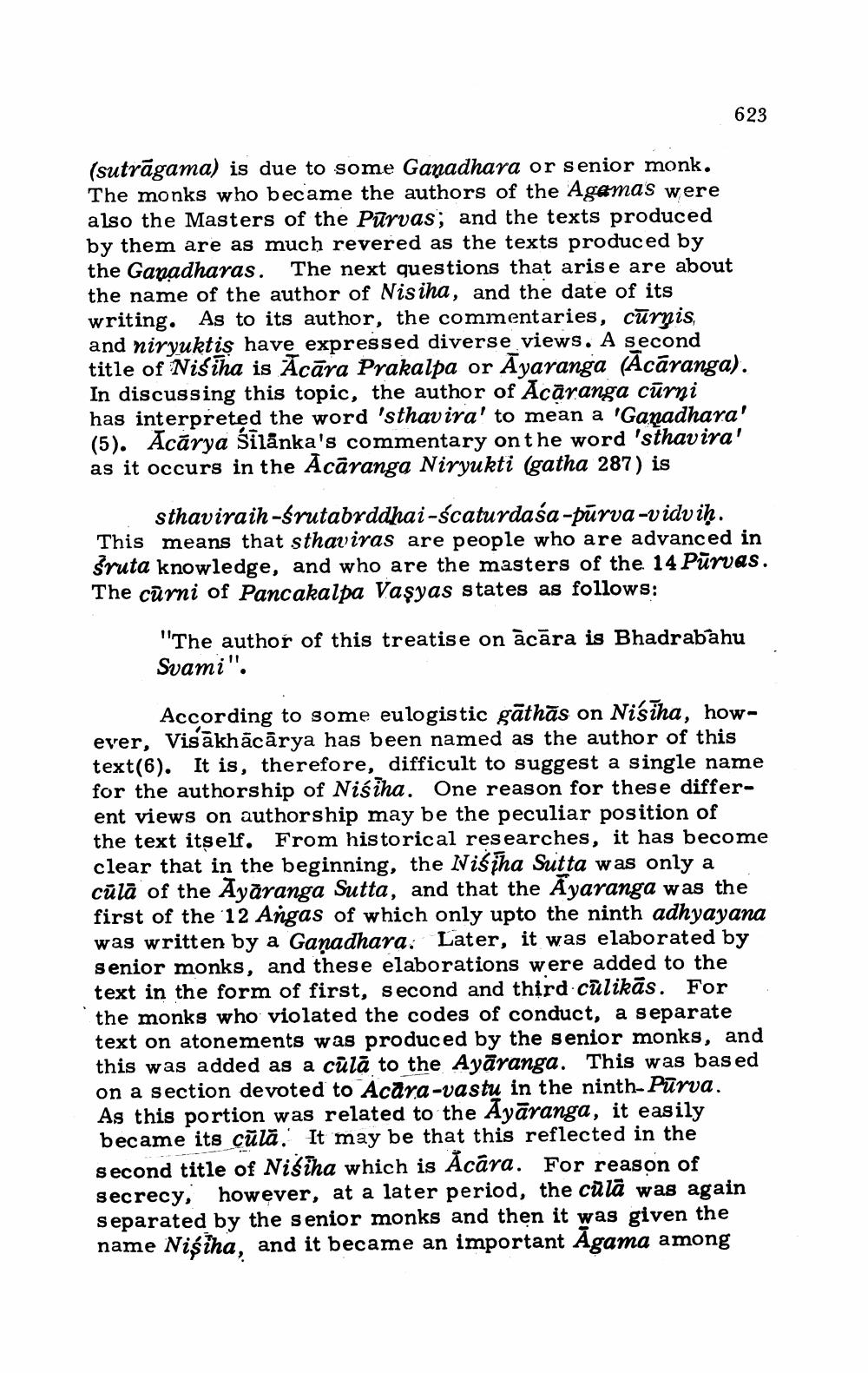________________
623
(sutrāgama) is due to some Ganadhara or senior monk. The monks who became the authors of the Agemas were also the Masters of the Pūrvas; and the texts produced by them are as much revered as the texts produced by the Ganadharas. The next questions that arise are about the name of the author of Nisiha, and the date of its writing. As to its author, the commentaries, cūris, and niryuktis have expressed diverse views. A second
of Niś iha is Acāra Prakalpa or Ayaranga (Acáranga). In discussing this topic, the author of Acaranga cūrni has interpreted the word 'sthavira' to mean a 'Ganadhara' (5). Acārya Śilänka's commentary on the word 'sthavira' as it occurs in the Acāranga Niryukti (gatha 287) is
sthaviraih-śrutabrddhai-Ścaturdaśa-pūrva -vidvih. This means that sthaviras are people who are advanced in śruta knowledge, and who are the masters of the 14 Pūrvas. The cūrni of Pancakalpa Vaşyas states as follows:
"The author of this treatise on ācāra is Bhadrabahu Svami".
According to some eulogistic gāthās on Nisiha, however, Visakhācārya has been named as the author of this text(6). It is, therefore, difficult to suggest a single name for the authorship of Nisiha. One reason for these different views on authorship may be the peculiar position of the text itself. From historical researches, it has become clear that in the beginning, the Nišjha Sutta was only a cūlā of the Ayāranga Sutta, and that the Ayaranga was the first of the 12 Angas of which only upto the ninth adhyayana was written by a Ganadhara. Later, it was elaborated by senior monks, and these elaborations were added to the text in the form of first, second and third culikās. For the monks who violated the codes of conduct, a separate text on atonements was produced by the senior monks, and this was added as a culă to the Ayāranga. This was based on a section devoted to Acara-vastu in the ninth-Pūrva. As this portion was related to the Ayāranga, it easily became its cūlā. It may be that this reflected in the second title of Nišina which is Acāra. For reason of secrecy, however, at a later period, the cūlā was again separated by the senior monks and then it was given the name Nisiha, and it became an important Agama among




